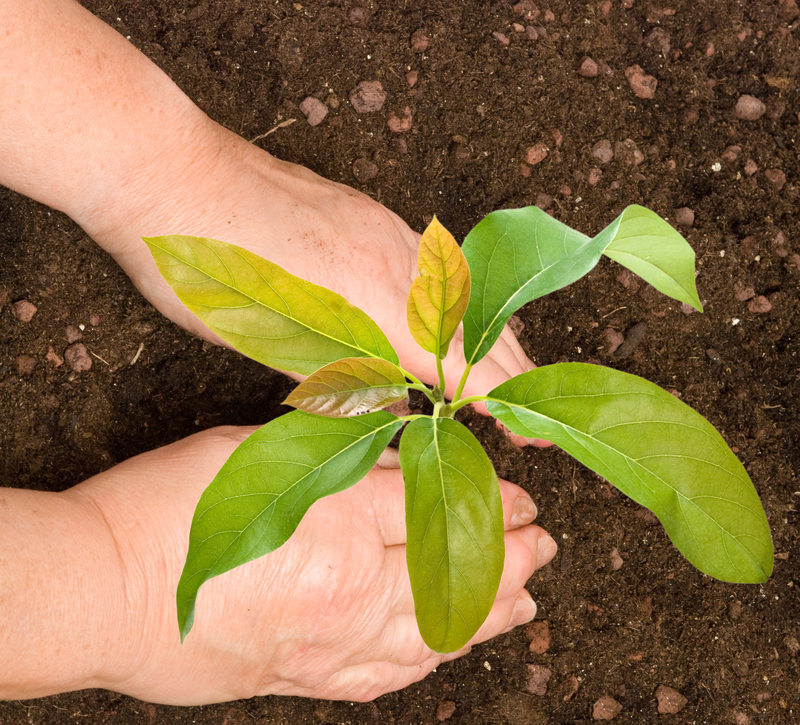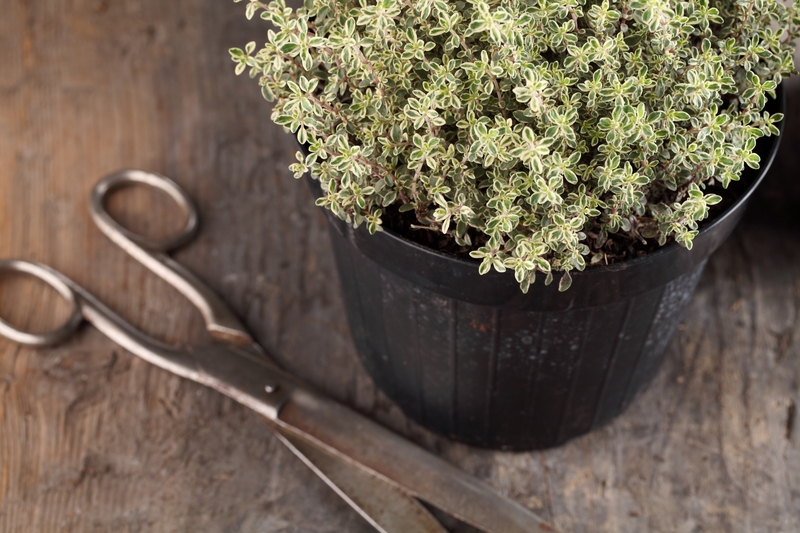Crafting the ideal environment for orchids
Posted on 30/08/2025
Crafting the Ideal Environment for Orchids: The Ultimate Guide
Orchids are prized for their exquisite blooms and vibrant foliage, capturing the hearts of plant enthusiasts worldwide. However, nurturing thriving orchids requires a keen understanding of creating the perfect environment for orchids. This comprehensive guide will walk you through the key elements of orchid care--from light and humidity to potting and fertilizers--ensuring your prized plants not only survive but flourish in your home or garden.

Why Creating the Best Environment for Orchids Matters
Every species of orchid has evolved to thrive in specific environmental conditions, making it essential to replicate those surroundings as closely as possible. A carefully crafted orchid growing environment provides the foundation for healthy foliage, robust roots, and breathtaking blooms year after year.
- Healthy orchids are more resistant to pests and diseases.
- Consistent blooms rely on optimal growing conditions.
- Understanding orchid habitat leads to fewer maintenance issues and greater enjoyment.
In the following sections, we'll dive into each aspect of creating the perfect place for orchids to thrive.
Light: The Lifeblood of Orchids
Understanding Orchid Light Requirements
Light is arguably the most critical factor in crafting the ideal environment for orchids. Different orchids have varying needs, but most popular varieties (such as Phalaenopsis, Cattleya, and Dendrobium) need bright, indirect light.
- Phalaenopsis Orchids: Prefer medium, filtered light. Too much sun can scorch the leaves, while too little will impede flowering.
- Cattleya Orchids: Require more intense sunlight and can tolerate some direct morning sun.
- Dendrobium Orchids: Enjoy bright but indirect sunlight, similar to Phalaenopsis.
Best Placement for Orchid Growth
To successfully simulate the best environment for orchids, place your plant in a room with:
- East-facing windows for gentle morning light
- Sheer curtains to diffuse harsh midday sun
- Grow lights if natural light is insufficient
An orchid's leaves will communicate their light conditions. Yellowish tones or scorched spots suggest too much light, while excessively dark green leaves signify insufficient exposure. Adjust your plant's location accordingly.
Humidity: Orchids' Secret for Flourishing Growth
Why Humidity Matters for Orchids
Most orchids are native to tropical regions where humidity levels regularly reach 60-80%. In typical homes, humidity can drop well below these figures, particularly during heating or air conditioning use. Enhancing humidity for orchids is essential for healthy growth and bloom cycles.
Maintaining Proper Humidity Levels
- Humidity Trays: Place shallow trays filled with pebbles and water beneath your orchid pots. As water evaporates, it raises the local humidity.
- Room Humidifiers: Install a humidifier in your orchid room to maintain consistent levels.
- Misting: Lightly mist orchid foliage each morning to provide a short burst of humidity, but avoid water accumulating in the crown.
- Grouping Plants: Cluster orchids and other houseplants together to naturally raise humidity through transpiration.
Monitor the relative humidity with a hygrometer and aim for 50-70%. *Proper humidity is a foundation for the best environment for growing orchids.*
Temperature: Balancing Warmth and Coolness for Orchid Success
Temperature Ranges for Popular Orchids
While orchids love warmth, temperature preferences vary by species. Most commercially available orchids thrive in these ranges:
- Daytime: 65 - 80?F (18 - 27?C)
- Nighttime: 55 - 65?F (13 - 18?C)
Exposure to consistent temperatures promotes growth, while a slight nighttime drop is essential for some orchids to trigger blooming. Avoid drafts, radiators, and direct airflows, as sudden temperature changes can cause flower drop.
Air Movement and Ventilation: Freshness is Key
Why Orchids Need Good Air Circulation
Orchids benefit from gentle air movement, simulating their natural environments where breezes keep humidity up and pathogens at bay. Stagnation can invite fungal spots, rot, and pests.
- Use a small oscillating fan, positioned away from direct blows at plants
- Ventilate greenhouses or growing rooms regularly
- Avoid sealed terraria or domes unless controlling for specific microclimates
*Balanced ventilation aids orchid health and resilience in their ideal growing environment.*
Watering Techniques for Optimal Orchid Environments
Orchid Watering Best Practices
Overwatering is one of the most common mistakes for new orchid keepers. In their native habitat, many orchids are epiphytes, growing on trees and exposed to frequent, brief rain showers with quick drainage.
- Allow Potting Media to Dry Slightly: Stick your finger an inch deep; water only if it feels dry.
- Water Thoroughly: Soak the pot until water drains freely from the bottom.
- Avoid Standing Water: Never let orchid roots sit in water, as this encourages rot.
- Consider Water Quality: Use rainwater, distilled, or filtered water to prevent salt buildup in the potting medium.
*Proper watering is a crucial ingredient in the formula for the ideal orchid growing environment*
Potting Media: The Foundation of Orchid Support
Choosing the Right Orchid Potting Mix
Orchids require special potting media that promotes free air flow and excellent drainage. Standard potting soils are too dense and retain excessive moisture. For a thriving orchid environment, select these mixes:
- Bark-Based Mixes: Quality fir bark or pine bark chips are most common, especially for Phalaenopsis and Cattleya.
- Spaghnum Moss: Holds moisture longer, excellent for orchids that prefer more moisture, such as Miltoniopsis.
- Coconut Husk: Sustainable and moisture-tolerant, popular in tropical climates.
- Charcoal, Perlite, and Clay Pellets: Useful supplements to improve structure and drainage.
*Repot orchids every 1-2 years to refresh old media and prevent root rot.*
Feeding Orchids: Fertilizers for Lush Growth and Blooms
Orchid Nutrition Essentials
To create an ideal environment for orchid propagation and flowering, regular, gentle feeding is key. Orchids in pots get limited nutrients, so supplement with fertilizer:
- Use Balanced Orchid Fertilizer: 20-20-20 or similar, specifically for orchids.
- Feed Weakly, Weekly: Dilute fertilizer to half or quarter strength; fertilize every time you water or every other week.
- Flush the Media: Once a month, water thoroughly with plain water to remove salt buildup.
- Adjust Feed During Dormancy: As the plant stops growing after blooming, reduce feeding frequency.
*Proper nutrition leads to strong leaves, roots, and plentiful flowers - an essential piece of the orchid puzzle.*
Pot Selection: Size and Drainage Matter
Choosing the Right Pot for Orchid Growth
The best environment for cultivating orchids starts with the right container.
- Pot Size: Too large a pot retains moisture and risks root rot. Choose containers only slightly larger than your orchid's root mass.
- Drainage: Ensure multiple drainage holes to allow water to escape easily.
- Material: Clear plastic pots help monitor root health and moisture. Decorative outer pots are fine for aesthetics, but always allow for drainage.
Special Considerations: Mounting, Terrariums, and Outdoor Growing
Mounted Orchid Displays
Some orchids, especially epiphytes like Vanda and miniature Cattleya, can be grown mounted on cork bark, driftwood, or tree fern slabs. This method closely mimics their native environment.
Orchids in Terrariums
For small or moisture-loving varieties, a mesh-topped terrarium can maintain humidity and temperature. Ensure adequate ventilation and avoid water pooling at the base.
Outdoor Orchid Growing
In tropical or subtropical regions, you can grow orchids outdoors in dappled shade. Hanging baskets, airy slat baskets, and secure mounts under tree canopies create lush, naturalistic displays.
Orchid Environment Troubleshooting Guide
Common Problems and Solutions
- Wilting or Wrinkled Leaves: Insufficient watering or damaged roots. Check top and bottom of leaves and inspect roots for signs of rot.
- No Flowers: Too little light, overfeeding, or insufficient temperature drop at night.
- Black Spotting: Too much humidity with poor air movement; increase airflow to prevent fungal issues.
- Sticky Leaves or Webbing: Pests like scale, aphids, or spider mites. Treat promptly with insecticidal soap.
Troubleshoot problems early and adjust your orchid's environment proactively for optimum results.
Seasonal Adjustments for the Perfect Orchid Habitat
Summer
- Shade from strong midday sun
- Increase air circulation and humidity
- Monitor for heat stress, especially near windows
Winter
- Protect from cold drafts and sudden temperature dips
- Supplement with grow lights as days shorten
- Reduce watering and feeding as growth slows

Tips for Long-Term Orchid Success
- Observe your orchid's condition frequently and respond to changes in leaf color, firmness, and blooms.
- Keep a simple orchid care journal noting watering, feeding, repotting, and blooming cycles.
- Continue learning about the unique needs of your specific orchid species.
Remember, orchids reward patience and attention to detail. Master these techniques, and you will enjoy years of stunning flowers and healthy plants.
Conclusion: Your Best Orchid Environment Awaits
In summary, crafting the ideal environment for orchids involves careful consideration of light, humidity, temperature, air flow, watering, potting, and feeding. Whether you're a beginner or an expert grower, understanding these fundamentals paves the way for vibrant, long-lasting orchid displays. With dedication and care, your orchids will become the show-stopping centerpiece of your home or garden.
If you've enjoyed this article, bookmark it, share it with fellow plant lovers, and start cultivating the ultimate environment for your orchids today!

